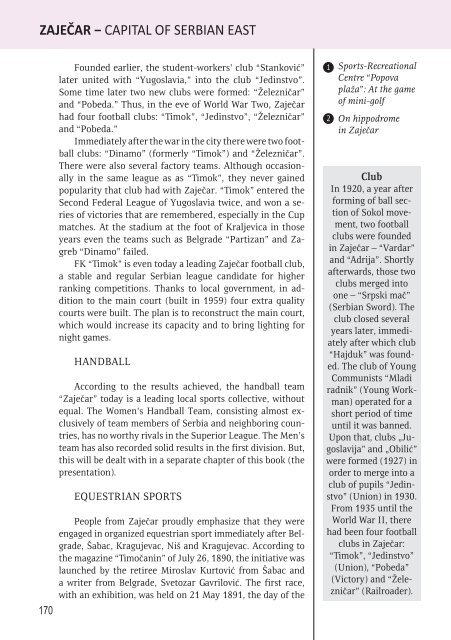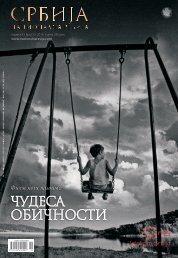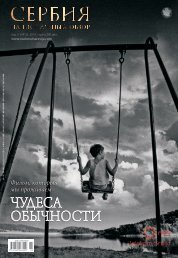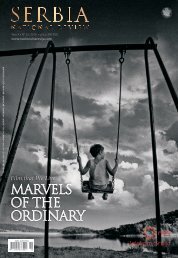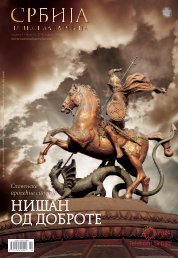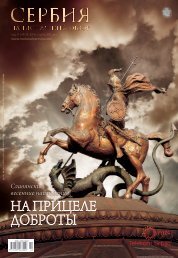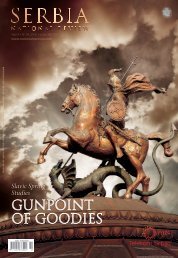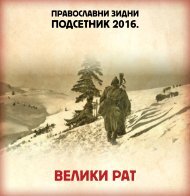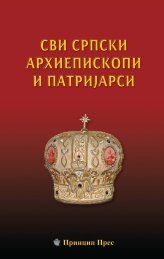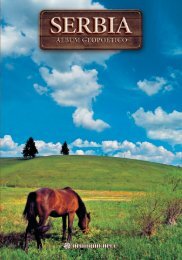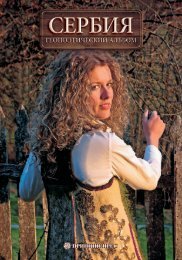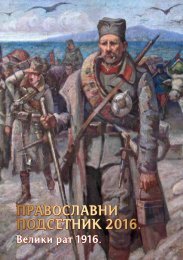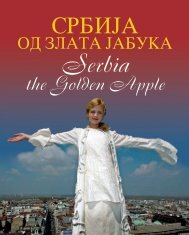Zajecar - engleski - niska rezolucija
Create successful ePaper yourself
Turn your PDF publications into a flip-book with our unique Google optimized e-Paper software.
ZAJEČAR − CAPITAL OF SERBIAN EAST<br />
Founded earlier, the student-workers’ club “Stanković”<br />
later united with “Yugoslavia,” into the club “Jedinstvo”.<br />
Some time later two new clubs were formed: “Železničar”<br />
and “Pobeda.” Thus, in the eve of World War Two, Zaječar<br />
had four football clubs: “Timok”, “Jedinstvo”, “Železničar”<br />
and “Pobeda.”<br />
Immediately after the war in the city there were two football<br />
clubs: “Dinamo” (formerly “Timok”) and “Železničar”.<br />
There were also several factory teams. Although occasionally<br />
in the same league as as “Timok”, they never gained<br />
popularity that club had with Zaječar. “Timok” entered the<br />
Second Federal League of Yugoslavia twice, and won a series<br />
of victories that are remembered, especially in the Cup<br />
matches. At the stadium at the foot of Kraljevica in those<br />
years even the teams such as Belgrade “Partizan” and Zagreb<br />
“Dinamo” failed.<br />
FK “Timok” is even today a leading Zaječar football club,<br />
a stable and regular Serbian league candidate for higher<br />
ranking competitions. Thanks to local government, in addition<br />
to the main court (built in 1959) four extra quality<br />
courts were built. The plan is to reconstruct the main court,<br />
which would increase its capacity and to bring lighting for<br />
night games.<br />
HANDBALL<br />
According to the results achieved, the handball team<br />
“Zaječar” today is a leading local sports collective, without<br />
equal. The Women’s Handball Team, consisting almost exclusively<br />
of team members of Serbia and neighboring countries,<br />
has no worthy rivals in the Superior League. The Men’s<br />
team has also recorded solid results in the first division. But,<br />
this will be dealt with in a separate chapter of this book (the<br />
presentation).<br />
EQUESTRIAN SPORTS<br />
People from Zaječar proudly emphasize that they were<br />
engaged in organized equestrian sport immediately after Belgrade,<br />
Šabac, Kragujevac, Niš and Kragujevac. According to<br />
the magazine “Timočanin” of July 26, 1890, the initiative was<br />
launched by the retiree Miroslav Kurtović from Šabac and<br />
a writer from Belgrade, Svetozar Gavrilović. The first race,<br />
with an exhibition, was held on 21 May 1891, the day of the<br />
170<br />
1<br />
2<br />
Sport s-Recreational<br />
Centre “Po po va<br />
pla ža”: At the game<br />
of mi ni-gol f<br />
On hippodrome<br />
in Za je ča r<br />
Club<br />
In 1920, a year after<br />
forming of ball section<br />
of Sokol movement,<br />
two football<br />
clubs were founded<br />
in Zaječar – “Var dar”<br />
and “Adri ja”. Shortly<br />
afterwards, those two<br />
clubs merged into<br />
one – “Srpski mač”<br />
(Serbian Sword). The<br />
club closed several<br />
years later, immediately<br />
after which club<br />
“Hajduk” was founded.<br />
The club of Young<br />
Communists “Mladi<br />
radnik” (Young Workman)<br />
operated for a<br />
short period of time<br />
until it was banned.<br />
Upon that, clubs „Jugoslavija”<br />
and „Obilić”<br />
were formed (1927) in<br />
order to merge into a<br />
club of pupils “Jedinstvo”<br />
(Union) in 1930.<br />
From 1935 until the<br />
World War II, there<br />
had been four football<br />
clubs in Za je ča r:<br />
“Ti mok”, “Je din stvo”<br />
(Union), “Po be da”<br />
(Victory) and “Že lezni<br />
čar” (Railroader).


